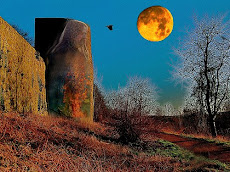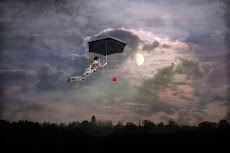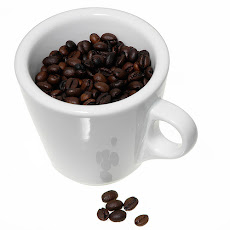
You could say that Syd Field wrote the book on screenwriting. His longtime classic, if not something of a bible in the industry, “Screenplay: The Foundation of Writing,” has sold over 600,000 copies, been translated into 17 languages, and used in nearly 400 colleges and universities around the country. He’s also written the internationally acclaimed best-selling books, “The Screenwriter’s Workbook,” “Selling A Screenplay,” “Four Screenplays,” and “The Screenwriter’s Problem Solver.”
The Los Angeles Times Magazine once referred to him as the “"the first prophet of writing for the screen.”
Field has collaborated with top Hollywood writers, directors and producers, such as Roland Joffe (“The Killing Fields”), James Brooks (“Terms of Endearment,” “Broadcast News”), and Joe Eszterhas (“Basic Instinct,” “Jagged Edge”), and been a special consultant to 20th Century Fox, The Disney Studios, and TriStar Pictures.
His former students include Anna Hamilton Phelan (“Mask,” ”Gorillas in the Mist”), John Singleton (“Boyz in the Hood, Poetic Justice”), Randi Mayem Singer (“Mrs. Doubtfire”), Laura Esquivel (“Like Water for Chocolate”), Michael Kane (“The Color of Money”), and Kevin Williamson (“Scream, Scream 2”).
Here is my exclusive interview with Mr. Field:
Mike: Who were your early influences in film?
Field: I had three, all great directors. 1) Jean Renoir, the filmmaker who directed two of the greatest films ever, “Grand Illusion” and “Rules of the Game.” He was, without question, my mentor, and I was lucky enough to spend a couple of years with him at the University of California at Berkeley. It was an extraordinary experience. He taught me everything I now know about film. How to look at it. How to approach it. And what the art and craft of it is. On the subject of characters, he once told me it’s more effective dramatically to portray a son of a bitch than a nice guy. It’s worth thinking about 2) Michelangelo Antonioni, Italian filmmaker who directed the masterpiece, “La Notte,” about a disintegrating marriage. He showed me exactly how to tell a story more with pictures than with words and explanations, about the emotional arc of the character underneath the level of dialogue and overall tip of the storyline. 3) Sam Peckinpah, the notorious American filmmaker who directed “The Wild Bunch.” I spent a summer with Sam while he was co-writing The Wild Bunch. And we talked about everything, from screenwriting to directing to Westerns. I learned a lot just by being around him.
Mike: Where did you get your start?
Field: At David L. Wolper Productions. In the four years I was there, I worked my way up from the shipping department to writer-producer, working on, in one way or another, 125 documentaries, including National Geographic, Biography, Jacques Cousteau. There was a ton of great talent scattered throughout that company: Naming just a few, William Friedkin (director, “The French Connection” and “The Exorcist”), James Brooks (writer, director, producer, “Terms of Endearment” and “As Good As It Gets”), Walon Green (co-screenwriter, “The Wild Bunch”), and Alex Haley (writer, “Roots”).
Mike: Were you shocked by the success of “Screenplay”?
Field: Yes, but I knew that people were hungry for it. When I taught screenwriting at the Sherwood Oaks Experimental College in Hollywood, my students would always ask me, “What book can I read about screenwriting?” And the only one I knew of was “The Art of Dramatic Writing,” by Lajos Egri. And that was about playwriting and written in the mid-1940’s. So I knew there was a need for a book like mine. I based “Screenplay” on my teachings and my two-year experience in the 1960’s as a reader for a movie company called Cinemobile, where I read over 2,000 scripts. The thing is, of those 2,000 or so scripts, there were only 40 that were memorable to me, that really worked well. It got me thinking on what makes a great screenplay. I was determined to find out what made those 40 better than all the others. So I broke them down, analyzed them. The book is an outgrowth of the conclusions I ultimately came to.
Mike: So what makes a great screenplay?
Field: The two big answers: Strong characters and strong action. But what I’ve found with most young screenwriters, they try to tell their story through dialogue, through words, and not with action. What they don’t understand is, film is behavior, creating an emotional situation that the character reacts to. When the story is told more with words than visuals, it makes for a bad, talky-talky screenplay, where the main character becomes very passive. The main character must always be active. He has to initiate the action.
Mike: Which screenplays would you suggest studying then, the ones to model?
Field: For action and character, “Thelma and Louise,” written by Callie Khouri, is by far my most significant teaching film these days. Also “The Shawshank Redemption,” written by Frank Darabont. For character, Alan Ball’s “American Beauty” is wonderful. And, of course, Robert Towne’s “Chinatown” is a masterpiece of film noir.
Mike: What’s the best piece of advice could you give an aspiring screenwriter?
Field: To write from your heart and don’t be afraid to write sh-tty pages. You can’t change something from nothing. Get it down on paper first, no matter what it looks like.
























No comments:
Post a Comment